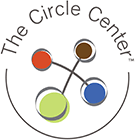Recent research indicates that training alone may not create the broad-based and sustainable change and development organizations are seeking. In response to this data, many organizations are exploring options for integrating coaching in their organizations to support development of strategically targeted professionals. Doug Riddle of the Center for Creative Leadership states in the recently published Handbook of Coaching in Organizations that there are essentially 7 key elements to integrating coaching in an organization from a systems-design perspective: executive coaching, mentoring, peer coaching, HR coaching, manager-as-coach and skillful use of goal tracking and reminder systems to support the participating professionals.
How are you supporting the durability of your training efforts? Coaching components are a great way to make sure you get the most for your training buck while also creating additional leadership development opportunities for the professionals involved.
Simple Coaching Components Improve Durability of Profession Development Training in Organizations








